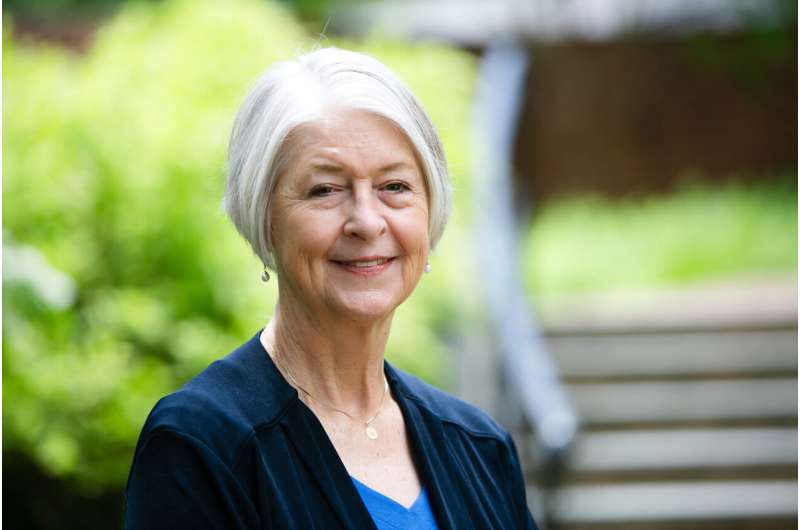This article has been reviewed according to Science X's editorial process and policies. Editors have highlighted the following attributes while ensuring the content's credibility:
fact-checked
trusted source
proofread
Expanding mindfulness practice creates benefits from classrooms to school systems

What's good for a classroom may be good for an entire school system.
For 20 years, Patricia Jennings, a professor of education at the University of Virginia's School of Education and Human Development, has worked to apply mindfulness practices and compassion to help teachers create a more emotionally supportive learning environment in the classroom, a sometimes high-stress space that is both cognitively and emotionally demanding.
Now she is also considering how mindfulness can extend beyond classrooms and play a role in re-envisioning and modernizing entire education systems.
Jennings' research has shown that mindfulness practices employed in classrooms can improve teaching and learning by helping individuals see situational contexts more clearly, as well as understand the perspective of other people.
Recently, Jennings, has been considering the stressors put on teachers from outside of the classroom—and if mindfulness can play a role in reducing the impact of those, as well.
One significant stressor across much of education, according to Jennings, is the continued use of outdated education models originally developed during the Industrial Revolution.
"The public school systems operate in ways that do not align with 21st-century needs," Jennings said. "The rigid time frames enforced by harsh bells, siloed content, segregated age groupings, and uniform expectations regarding learning processes and outcomes are remnants of the last century. The model is based on one that assumes children's needs and developmental processes are uniform and that knowledge should be disseminated through teacher-directed methods."
The frustration students and teachers experience is, in part, rooted in an education system that doesn't align with modern learning and teaching needs, she said.
"The world is much more interconnected and interdependent, and we now know learning is a very complex and non-linear process," Jennings said. "Today adults work in highly cooperative teams to solve problems and create."
Stressors in the education system and in the classroom can distort perceptions of students and teachers, her research shows.
That means a teacher experiencing stress while monitoring a large group of students as they engage in learning and interact with one another is at risk of misinterpreting a student's behavior, or vice versa.
A teacher experiencing high stress might misinterpret a student rummaging through their backpack as disrespectful or irresponsible when, in fact, the student may be having difficulty locating something they need for class. Similarly, a student's stress response to the teacher might reinforce the teacher's misinterpretation.
"When students feel unfairly criticized, they can either become defensive or freeze up with fear," Jennings said. "In either case, learning is derailed for the student, and the other students in the classroom may now be distracted and possibly afraid."
Mindfulness can resolve many of those issues before they arise.
"When people practice mindfulness, they become more aware of their own body and mind," Jennings said. "With mindfulness practices, teachers can recognize when they are stressed and projecting that stress onto their students. That awareness can provide teachers the space they need to recognize what a student is experiencing and respond thoughtfully, rather than automatically reacting in ways they may later regret."
Students also benefit from these practices. Educators often tell students to calm down and pay attention, but rarely teach them how. According to Jennings, developmentally appropriate mindful awareness practices can help. Children can learn to use deep breathing to calm down, for example. Or teachers can engage students in activities that build focused attention, such as listening to the sound of a chime or noticing their balance as they engage in yoga practices.
"Mindfulness helps us broaden our view of situations beyond the personal," she said. "It also allows us to see beyond our habitual behaviors that reinforce these systems."
In the next phase of her research, Jennings is joining several scholars who are applying mindfulness and systems thinking to envision new education systems.
This fall, she will spend a sabbatical exploring the work of scholars like Otto Scharmer and Peter Senge of the Massachusetts Institute of Technology. Scharmer has developed a framework for transforming education systems called "Theory U."
The process involves deep listening, suspending judgment and exploring alternative perspectives, Jennings said.
"This is happening in pockets around the world," she said. "This fall, I'll be exploring where this is occurring and how we might scale these new models to support school transformation."


















